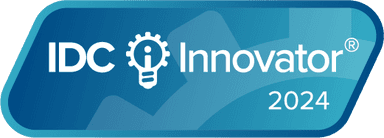Nov 12, 2025
Enterprise SaaS Pricing Models: Balancing Subscription, Tiered, and Consumption
Enterprise SaaS pricing is shifting from flat subscriptions to usage-based and hybrid models, aligning prices with actual usage. This drives easier adoption, natural upsells, and retention, but requires metered billing automation to prevent errors and optimize revenue.
For most enterprise SaaS businesses, long-term success hinges on your enterprise pricing strategy.
In this tight market, today’s leaders are moving beyond flat subscriptions toward enterprise SaaS pricing models that emphasise usage-based pricing, consumption-based billing, and hybrid pricing, aligning prices with real usage to drive easier adoption, natural upsells, and stronger retention.
As AI billing and complex usage grow, teams need metered billing software and billing automation to streamline billing processes, strengthen billing workflows, and improve billing dashboards and integrations. These tools reduce costly errors and under-billing (also known as revenue leakage).
In this article, we break down the top enterprise SaaS pricing models across the SaaS pricing spectrum, explain why there’s a big shift towards usage-based pricing, and share how to ensure your pricing strategy benefits both customers and your business.
The Most Common Enterprise SaaS Pricing Models
The enterprise pricing strategy you choose should align with your buyer’s behaviour and with the value delivered by your products. Here are the two most common enterprise SaaS pricing models today and where they’re best used.
Subscription-Based Pricing
This classic SaaS pricing model is simple, predictable, and easy to explain. With flat recurring fees, customers pay the same amount each billing cycle, usually tied to seats, licences, or feature bundles. It’s a familiar structure for finance teams and straightforward for sales to position.
However, that simplicity comes with limits. Subscription-based pricing doesn’t adapt to customer usage and struggles to keep pace with variable costs, uneven usage patterns, or shifting customer expectations.
Consumption-Based Pricing
Consumption-based pricing (also called usage-based pricing) ties revenue directly to how much a customer actually uses your product. It’s flexible, low-friction, and lets customers start small, experiment, and scale naturally as they see value. This model creates powerful alignment; customers pay for outcomes, not promises.
Studies show that more than 40% of SaaS companies have adopted usage-based pricing, with another 17% actively testing it. This model can take different forms; for example, it might integrate elements of credit-based pricing. In credit-based pricing in SaaS, customers pre-buy a bank of credits and draw down usage against it, which makes budgeting predictable while preserving usage flexibility.
The tradeoff? It requires accurate, connected metered billing software to avoid errors and wasted time. Tracking and rating usage across thousands of events, users, or API calls can’t be done reliably with spreadsheets or static billing tools.
Without the right systems, errors, delays, and costly revenue leakage become real risks. Software companies with complex pricing typically lose 1-3% of their revenue to under-billing (i.e., tens of thousands of dollars per month for a business with over $50 million in ARR), and sometimes much more.
Note: Both subscription-based pricing and consumption-based pricing models can also utilize tiered pricing. It scales based on user count, usage volume, or feature access, providing customers with clear upgrade paths as their needs evolve. This framework is ideal for upsells and segmentation, as it enables you to serve small teams, mid-market buyers, and enterprise clients without overcomplicating the sales process.
While tiers are intuitive, they can also be complex for teams to manage manually. Tracking usage thresholds and overages across multiple tiers often requires tight coordination between sales, finance, and product systems.
Modern pricing infrastructure solves this by automating the tiering logic.
Why Usage-Based Pricing Is Taking Over
Subscription-based pricing has long been the cornerstone of SaaS. But now, businesses are shifting to usage-based pricing, en masse: Research from OpenView shows that three out of five SaaS companies now have some form of usage-based pricing, and that 20% more are expected to test it in the near future.
A few main factors are driving this shift:
- Today’s tech demands it: Artificial intelligence, cloud infrastructure, and IoT services depend on pricing models grounded in actual consumption. Customers expect their bill to match how they’re genuinely using your product.
- Legacy systems crack under modern demands: As companies adopt usage-based pricing, traditional billing tools struggle with usage ingestion, complex pricing rules, and billing in arrears. The result is delays, missing data, and billing errors—pushing companies to modernize their monetization stack.
That’s why leaders are adopting metering and rating infrastructure that captures usage in real time, applies flexible pricing rules, and automates the flow of contract, billing, and usage data.
Automation Is Key to Supporting Modern Pricing Models
Modern pricing models blend subscription, consumption, and tiered pricing to provide a granular approach to billing. While the benefits are numerous and the impacts powerful, there’s one thing to keep in mind: These models multiply operational complexity. And legacy manual billing systems alone can't keep up with the high volume and nuances of contracts, or with ASC 606 compliance. They also have shortcomings that require manual processes to fill the gaps.
The solution?
To automate parts of your billing and revenue workflows. For example, you can easily automate the usage-based billing process by combining metering and rating software with proper integrations (e.g., Salesforce, NetSuite) to enable efficiency and scalability. With the right billing automation tech stack in play, you can eliminate operational pain, stop revenue leakage, reduce compliance risk, and improve customer satisfaction.
Hybrid Pricing Strategy: The Best of All Worlds
It might seem challenging to choose a single pricing model for all your products, customers, and scenarios. The good news? You don’t have to.
Oftentimes, the most effective enterprise SaaS pricing model is a hybrid approach that combines a flat platform fee with usage-based overages.
Here’s how it works: Customers pay a recurring base fee that typically covers access to the core platform, standard features, and support. Then, on top of that, customers are billed for variable usage, things like storage or data processed.
This usage is automatically metered in real time, and at the end of the billing period, those usage events are rated and added as additional charges to the invoice.
This model delivers the best of both worlds. You get predictability (stable, forecastable revenue) and accurate revenue capture from high-usage customers.
Who Owns Pricing Strategy in the Enterprise?
Mastering your enterprise pricing strategy also means mastering workflows. And one question often comes up: Who (really) owns pricing strategy in enterprise orgs?
No single department owns pricing; it’s actually a cross-functional effort that lives at the intersection of product, sales, and finance.
Each team brings a different lens to the table, and the alignment between the three units is what turns pricing into a powerful growth driver:
- Product: Product teams are responsible for defining how value translates into price and for owning pricing validation, design, and monetisation experimentation. They decide which package tiers make sense, which metrics to monetise, and where to experiment with new pricing models.
- Sales: Sales turns pricing theory into revenue reality, ensuring pricing can be positioned and closed effectively. It makes sense why: Reps need to be able to explain their model, easily quote it, and defend it in negotiations.
- Finance: Finance keeps the entire system grounded, dotting the i’s and crossing the t’s. This department validates billing alignment, handles ASC606, and supports compliance.
When these three functions work in sync, pricing becomes a strategic asset that supports scalable growth, operational clarity, and customer trust.
Pricing Models Are Only as Strong as the Billing Stack Behind Them
High-growth enterprise SaaS businesses require more than static, subscription-based pricing. They need dynamic pricing models that support scale, compliance, and automation. For that, you can turn to m3ter, the usage-based billing solution for B2B SaaS orgs. Think of us as the connective tissue between your CRM and ERP.
We provide metering and rating infrastructure to enable usage-based pricing strategies, plus an integration layer that automates the flow of contract, billing, and usage data across your stack.
Want to automate your billing and support a flexible enterprise SaaS pricing model?
Talk to m3ter today.
Frequently Asked Questions About Enterprise SaaS Pricing Models
As we finish up, here are the questions we hear most, answered simply and directly, so you can move forward with confidence.
What Are the Benefits of Usage-Based Pricing in SaaS?
Usage-based pricing ties revenue to real product usage, but on its own, it introduces operational and billing risk. Those “modern tech” benefits, scaling to AI and cloud workloads, smoother month-end close, and transparent invoices that don’t frustrate customers, only come when you modernize your monetization stack with tools like m3ter to handle the complexity.
How Do I Avoid Billing Errors When Introducing a New Pricing Model?
To avoid billing errors, treat the change as a cross-functional project—not just a billing tweak. Start by assembling a multi-disciplinary team (RevOps, Finance, Product, Engineering, and Customer Success) to design end-to-end workflows: From order capture in the CRM, through rating and billing, to revenue recognition in the ERP.
Next, assess whether your existing tools are suitable for the new model. If you’re introducing usage-based pricing, there will almost certainly be gaps, especially around usage ingestion, rating, and proration, that legacy billing systems struggle to handle effectively.
Finally, build in adequate time for testing. Run realistic test scenarios, conduct dry runs of full billing cycles, and compare results across systems before any transactions reach a customer. That’s how you catch errors early and avoid nasty surprises on the first live invoices.
How Does m3ter Handle Billing Integrations With Salesforce and NetSuite?
m3ter has out-of-the-box integrations with leading Finance, CRM, and CPQ systems, which make it easy to automatically sync data bi-directionally. With configuration options in the API and Console, both engineering and non-technical users can connect your tools.
Can I Use Subscription and Consumption Billing Together?
If you want to use both subscription and consumption-based billing, you’ll use what’s called a hybrid model. This includes recurring subscription charges, as well as metered billing for variable usage, such as storage or data processed.
You might also like…
Subscribe to Counting Tokens
Actionable insights on AI revenue, billing, and finance.
Ready to upgrade your monetization stack?
See a demo, get answers to your questions, and learn our best practices.
Schedule a demo


